Oct 31, 2017 | Canada, coins, nclt, silver
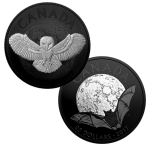 The Royal Canadian Mint has created two unique coins they call “Nocturnal by Nature” that would fit the theme of Halloween.
The Royal Canadian Mint has created two unique coins they call “Nocturnal by Nature” that would fit the theme of Halloween.
What makes them interesting is that the fields and some of the devices are plated with black rhodium to create a darkened look.
The first coin’s reverse, which is sold out, features a barn owl (Tyto alba) descending upon its prey. The view is looking up as the owl descends toward the night sky.
The second coin’s reverse has an image of a brown bat, darkened by night with its silhouette as it crosses passed the moon overhead.
-
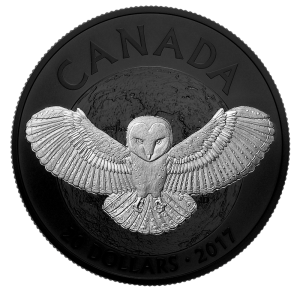
-
2017 Royal Canadian Mint Silver Nocturnal by Nature: The Barn Owl
-
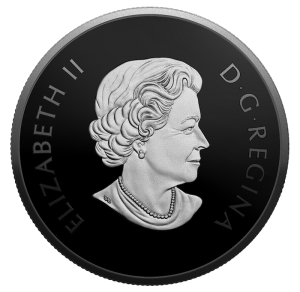
-
Obverse of the 2017 Nocturnal by Nature coins by the Royal Canadian Mint
-
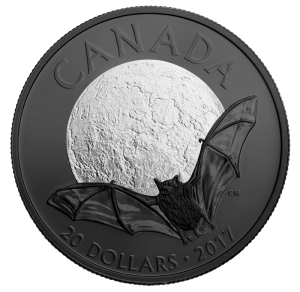
-
2017 Royal Canadian Mint Silver Nocturnal by Nature: The Little Brown Bat
As with all Canadian coins, the obverse features the official Royal Canadian Mint portrait of HM Queen Elizabeth II. The fields and legends are also plated with black rhodium that will make the Queen’s portrait really stand out.
Each coin is one troy ounce of .9999 silver, has serrated (reeded) edges, is 38 mm in diameter, and weighs 31.39 grams. Both coins have a face value of 20 dollars. The Royal Canadian Mint classifies the finish as matte proof.
Mintage is limited to 7,000 for each coin.
The single barn owl coin appears to be sold out on the Royal Canadian Mint website but looks like it can be purchased as part of their subscription program.
The price is listed at $119.95 CAD ($93.55 USD as I type this) for each coin with free shipping to Canada and the United States.
It may be too late for Halloween but they look very interesting!
All images courtesy of the Royal Canadian Mint.
Oct 30, 2017 | coin design, coins, Eagles, platinum, US Mint
Over a week ago, the U.S. Mint announced that they will begin a three-year series of the American Platinum Eagles proof coins featuring designs inspired by the Declaration of Independence. After looking at the designs and the designs of past platinum proof coins, they may be one of the most under-appreciated series of coins produced by the U.S. Mint.
-
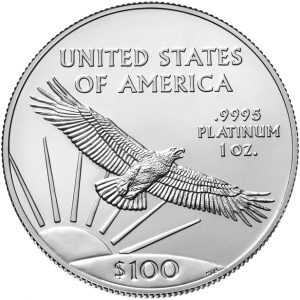
-
American Platinum Eagle bullion reverse design
-
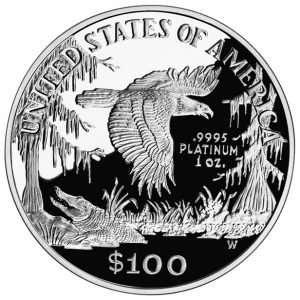
-
1999 American Platinum Eagle Proof reverse – Vistas of Liberty Reverse Designs – Eagle Above Southeastern Wetlands
-
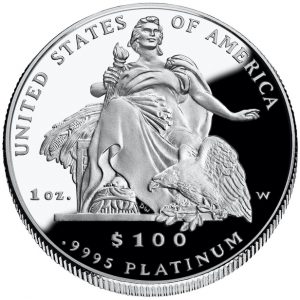
-
2004 American Platinum Eagle proof reverse – Daniel Chester French’s “America” that sits before the U.S. Customs House in New York City.
Since its introduction in 1997, the U.S. Mint has produced four series of proof coins with the reverse honoring different aspects of the nation. To see the list, see the “U.S. Coins by Type” page.
What distinguishes these coins are the well-executed reverse designs that few get to see or pay attention. It may be difficult for the average collector to consider collecting these coins because of the price of platinum has been either on par or higher than the price of gold. Also, platinum is not as well regarded as gold or silver as a precious metal causing it to be overlooked.
-
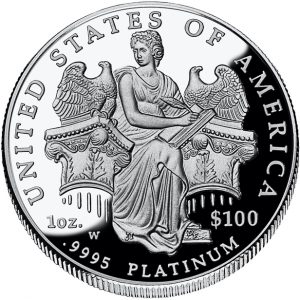
-
2006 American Platinum Eagle proof reverse – Branches of Government Series – “Legislative Muse” representing Legislative Branch
-
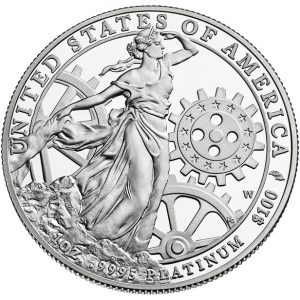
-
2013 American Platinum Eagle proof reverse – Preamble Series – “To Promote the General Welfare”
-
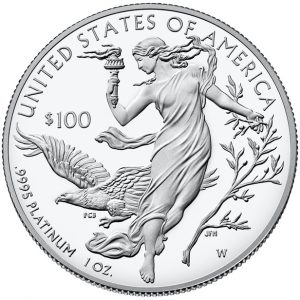
-
2016 American Platinum Eagle proof reverse – Nations Core Values – “Liberty and Freedom”
Since many of these coins did not sell in large quantities, many could be classified as modern rarities. But do not let the lack of supply dissuade you. Prices could be in the range of their bullion value plus a modest numismatic premium because the demand is also lower.
It is too bad these designs are confined to platinum coins. Unfortunately, the authorizing laws allow the U.S. Mint to do this with the platinum coins but not with silver. Since silver is more affordable for the average collector, maybe it is worth trying to ask Congress to change the law to allow these types of series for the American Silver Eagle proof coins.
Coin images courtesy of the U.S. Mint.
Oct 29, 2017 | coins, news, personal
Twelve years ago, when I went looking for numismatic information online, there were a few resources. The major numismatic publications had not fully embraced the online world and writing about numismatics strictly from the collector’s point of view was non-existent. I took a chance and started writing my own blog.
On October 29, 2005, I posted my first article on the Coin Collectors Blog. Back then it was hosted on Google’s Blogger service. While that was a good start, I found Blogger a bit limiting and moved to have it hosted by another company and changed the look-and-feel.
During that time I have also updated my collecting habits. In addition to the coins of the 20th century, I added Maryland colonial currency, the currency of the State of Israel, Canadian coins, and numismatic items associated with my hometown of New York City and specifically, Brooklyn.
-
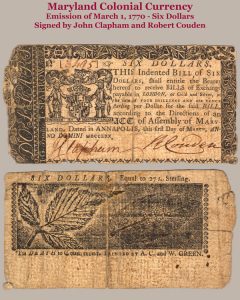
-
1770 Maryland Colonial 6-dollar note
-
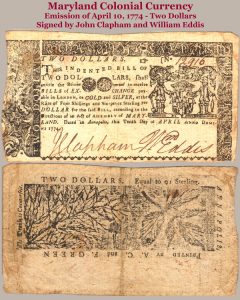
-
1774 Maryland colonial 2-dollar note
-
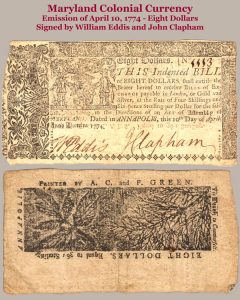
-
1774 Maryland Colonial 8-dollar note
-
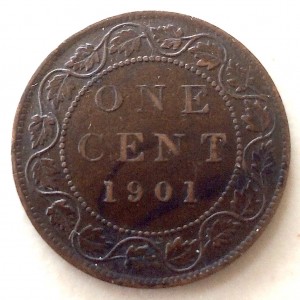
-
1901 Dominion of Canada Large Cent reverse
-
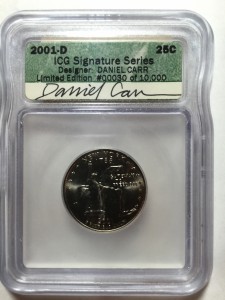
-
2000-D New York quarter with Daniel Carr’s autograph on ICG label
-
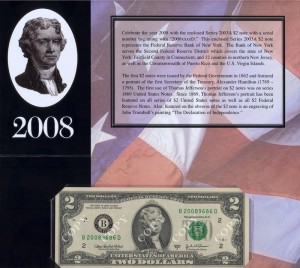
-
2008 $2 Single Note from the New York Fed
-
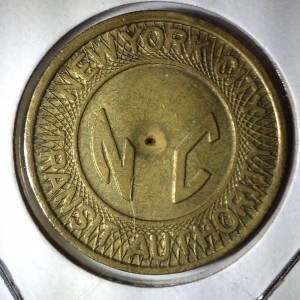
-
New York City Type 2 Subway Token error. It’s missing the punched out “Y”
-
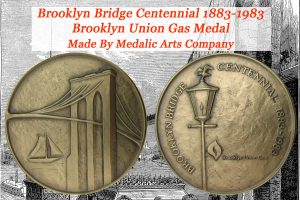
-
1983 Brooklyn Bridge Centennial Medal issued by Brooklyn Union Gas
-
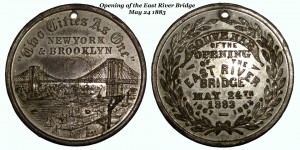
-
Medal from the opening of the Brooklyn Bridge in 1883
-
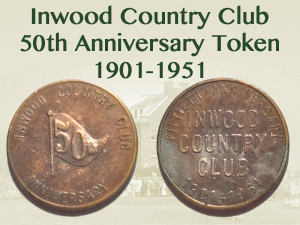
-
50th Anniversary medal from the Inwood Country Club.
-
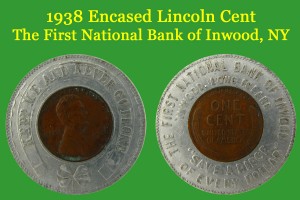
-
1938 Encased Cent from the First National Bank of Inwood (NY)
-
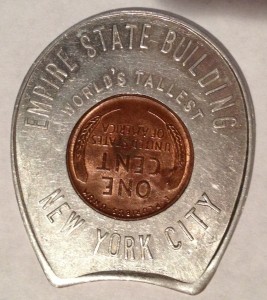
-
1949 Empire State Building Encased Cent announcing it as the “World’s Tallest Building,” which it was in 1949.
I have also picked up some other items that I just think are neat.
-
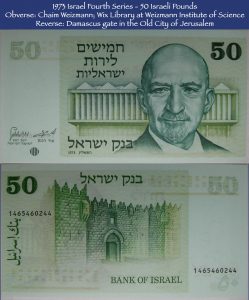
-
1973 Israel 4th Series Banknote — 50 NIS featuring portrait of Chaim Weismann
-
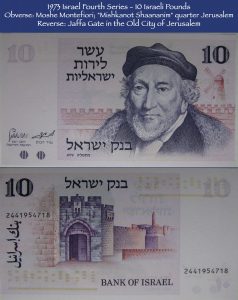
-
1973 Israel 4th Series Banknote — 10 NIS featuring portrait of Moshe Montifiori
-
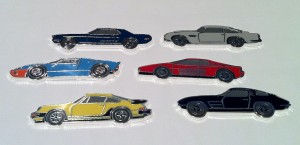
-
2010 Somalia Sports Cars
-
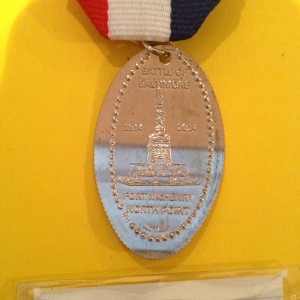
-
Closeup of the elongated quarter that is part of the Maryland Token and Medal Society souvenir card.
-
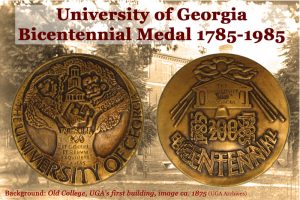
-
University of Georgia Bicentennial Medal — HOW BOUT THEM DAWGS!
-
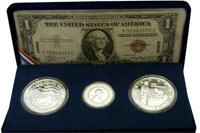
-
Pearl Harbor 65th Anniversary Set from the Honolulu Mint
-
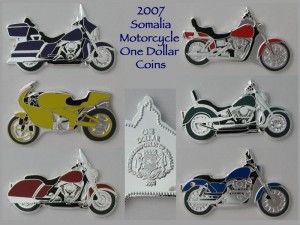
-
2007 Somalia Motorcycle Coins
-
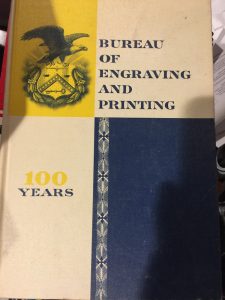
-
Bureau of Engraving and Printing 100 Years
-
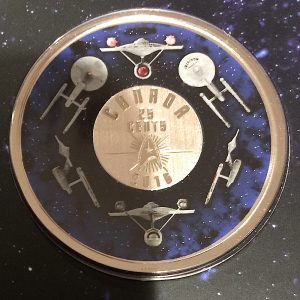
-
2016 Canada Star Trek 25-cents Coin
-
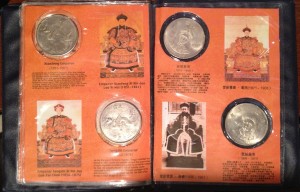
And I have written a lot.
Over 1,540 articles later, I have written on everything from the one-cent coin to the 1933 Saint-Gaudens Double Eagles. I have written about the making of coins and currency to the government’s legal and policy roles in the process. I have called out the American Numismatic Association for its failures but have complimented them when deserved.
What I have found really special is you, my readers.
When I started I did not know how many people would be interested in reading the blog. Today, I can report that my logs show that there an average of 1,100 unique visitors to this blog every time something is posted—which does not include the number of times people or bots try to hack the blog!
Not every reader is from the United States. After the United States, the top five countries the logs show (in order) are Germany, Canada, United Kingdom, India, and Spain.
After the home page, the top read post is “How easy is it to pass counterfeit currency.” This seems to be a search engine favorite when people are looking to do nefarious deeds. But after that post, my information pages U.S. Coins by Type and Numismatic Dictionary (respectively) are the second and third most read pages. GREAT! I am glad it is a used resource!
I am humbled and honored that you take time out of your day to read what I write. I hope you enjoy reading the Coin Collectors Blog as much as I enjoy writing.
Thank you for being part of my 12-year journey. Now onto my next 12 years!
And now the news….
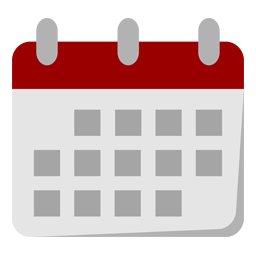
October 21, 2017
Sunlight barely reaches the depths of the cavernous, 5,000 sq ft warehouse space in Chai Wan where Dr Werner Burger and his Taiwanese-born wife, Tsai Yui-mei, who goes by the name Lucy, house seven tons of coins. 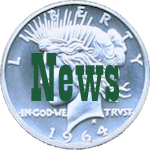 → Read more at scmp.com
→ Read more at scmp.com

October 22, 2017
You’d be hard pressed to find anyone in our country who hasn’t been affected by breast cancer—more than 100 women die from this disease every single day. The unbearable toll is too much; it’s time to end breast cancer once and for all.  → Read more at marieclaire.com
→ Read more at marieclaire.com

October 23, 2017
MOORESTOWN — Ted Brigante’s interest in coins began early. An owner of E&B Co. on West Main Street, Brigante grew up listening to his father weave tales of his own fascination with the pennies, dimes and dollars that might one day be worth more than their face value.  → Read more at burlingtoncountytimes.com
→ Read more at burlingtoncountytimes.com

October 23, 2017
Metal detectorists Reg Mead and Richard Miles unearthed the ancient trove, which contained around 74,000 coins, as well as gold and silver jewellery, in June 2012 in a field in Grouville, ending a 30-year search for the treasure.  → Read more at jerseyeveningpost.com
→ Read more at jerseyeveningpost.com

October 24, 2017
A coin dating back to the construction of a historic North-east castle has been discovered. The 16th-century find was unearthed at Castle Fraser, near Inverurie, by a nine-year-old taking part in an archaeological dig, run by the National Trust for Scotland (NTS).  → Read more at eveningexpress.co.uk
→ Read more at eveningexpress.co.uk

October 24, 2017
On October 23, in honor of Breast Cancer Awareness Month, Congressmember Carolyn B. Maloney (NY-12) joined Breast Cancer Research Foundation (BCRF) President and CEO Myra Biblowit, BCRF Chief Mission Officer Dr.  → Read more at qgazette.com
→ Read more at qgazette.com

October 25, 2017
An American “doughboy” with a distinctive crooked nose will adorn a World War I Centennial Silver Dollar being released by the U.S. Mint to mark the hundredth anniversary of the war’s end. The design on the heads side of the coin, which goes on sale next year, is titled “Soldier’s Charge,” and depicts a stone-faced soldier gripping a rifle.  → Read more at stripes.com
→ Read more at stripes.com

October 25, 2017
PHOTOS BY ADRIENNE SARVIS / THE SUMTER ITEM A large coil of copper, called a mondua, and a u-shaped piece of copper, called a manilla, were on display during the annual Sumter Coin Show on Saturday. The pieces were used as currency by Africans and Europeans during the time of the Atlantic slave trade.  → Read more at theitem.com
→ Read more at theitem.com

October 25, 2017
In a rather remarkable discovery, Chinese archaeologists excavated nearly 300,000 pieces of ancient coins that weighed 5.6 tons. The ancient currency was found under a common residential home in Fuliang County located in the province of Jiangxi, China.  → Read more at nextshark.com
→ Read more at nextshark.com

October 26, 2017
British coin expert Roger F. Bland—stopping through the United States to accept a prestigious award for his study of coins—visited campus Thursday evening to detail the history of ancient coin-finding to a group of roughly 40 University affiliates at the Harvard Art Museums.  → Read more at thecrimson.com
→ Read more at thecrimson.com
All coin images courtesy of the U.S. Mint.
Oct 27, 2017 | coins, commentary, grading, technology
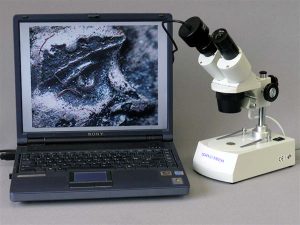
SinoTech Stereo Microscope with USB interface
However, the area where they are lacking is the science of numismatics. The part where technology has been able to automate to perform mundane work and do the finest details that many factories have increased output while reducing the workforce. It is their inability to grasp new technologies that have been holding back the growth of numismatics.
Recently, someone with great numismatic credentials said that you cannot teach grading using computers.
When I was working in non-civilian agencies, we would call that BRAVO SIERRA (from the phonetic alphabet meaning “B.S.”).
It used to be that video technology prevented images from being shown in detail. This goes back to the day from the old television standards were the picture was 525 scan lines (the number of passes the across the screen it took to form the picture) drawn about 30 times per second (the frame rate). This was different from early computers that drew fine dots on the screen. At the point color monitors entered the market, most were 640 dots wide by 480 dots tall which was a little smaller than your standard television screen.
Technology has advanced beyond what we had with the old cathode ray tube (CRT) television and monitor. Now, you can buy a monitor that attaches to your computer that has the same resolution as your television. What we call “4K High Definition” is 4096 pixels wide by 2160 pixels tall or over six time the size of the old monitors.
The iMac I am using has a display that is 5120 pixels tall by 2880 pixels wide and the iPhone 6 Plus in my pocket has a display that has 401 pixels per inch resolution. Think about that for a moment… every square inch of an image will use 160,801 individual dots to display on a device that fits into my back pocket!
These monitors are not only larger but the pixels are denser, meaning they are smaller and closer together. When in the old days you can look into the television and see jagged edges, you closeup look now shows smooth lines.
Go look at the specification of the smartphones and tablets that are on the market. They make television that was being sold as little as 10 years ago look like something out of ancient history.
Cameras are also better. Most smartphones can shoot images of over 8 megapixels up to 20 megapixels with image sensors that surpass what was on the market as late as 5 years ago. The amount of image data these cameras can capture are remarkable!
Can you guess the grade?
There are a lot of industries that use this technology for critical image analysis. The growing telemedicine field uses the imaging to allow a doctor to examine patients from anywhere including some of the most rural parts of the world. A nurse in the middle of a jungle can draw blood, put the slide in a machine that will take images and perform other data analysis and send it back to a doctor thousands of miles away to help diagnose illnesses.
Manufacturers of parts for your automobile and the airplanes you fly us this image analysis to check for imperfections in metal parts including difficult to spot stress fractures to prevent breakdowns. That should be comforting driving down the road at 60 MPH or 30,000 feet in the air.
Even the food industry uses this imaging technology to prevent foreign substances from being packaged and landing on the grocery store shelf. Remember the opening theme from Laverne & Shirley where they are on the bottling line watching for bottles without caps? That job does not exist anymore. Computers with imaging technology not only watch for those bottles but can spot one that is not filled correctly and if something other than beer was placed in the bottle.
If we can trust the imaging technology for medicine, vehicle safety, and food integrity, why can’t we trust imaging technology to grade coins?
-
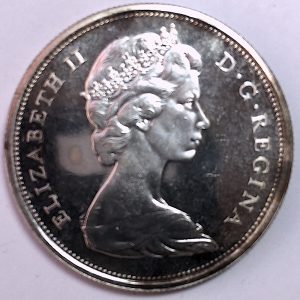
-
1965 Canadian Half Dollar
-
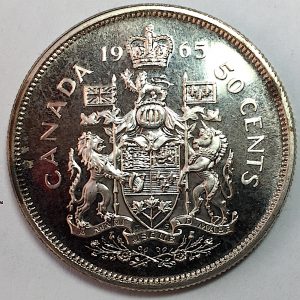
-
1965 Canadian Half Dollar reverse
Images taken with an iPhone 6 Plus
This is not to suggest that we can start grading coins by computer tomorrow but we can start soon. Programs have to be written to support the type of image analysis that would be required to determine an MS-69 coin from an MS-70. In fact, we may see fewer MS-70 coins using computer image analysis because the closer we look the more flaws we will find.
Professional Coin Grading Service provides the tip of this iceberg with the PCGS Photograde app. Whether you use the online service or one of the mobile apps, detailed imaging, and high definition displays can show you the details necessary. In fact, in a video PCGS produced about Photograde, they note how you can see the scratches on the imaged coin.
Images from PCGS Photograde App on the iPhone
If you can use the high definition images to see the details of coins, then the first step would be to use those images and the knowledge of grading to grade coins. Digital images can be transmitted anywhere there is a connection using the proper teaching platform.
With all due respect to the numismatic expert that said to me that you cannot teach grading using the computers, it is time to evolve from the early 2010s and see how technology has evolved to make it possible.
Oct 25, 2017 | news, policy, US Mint
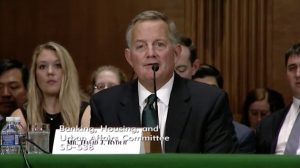
David J. Ryder at the hearing regarding his nomination to be the 39th Director of the U.S. Mint
As part of his opening statement, Ryder had noted that he worked for Secure Products, a company focused on developing anti-counterfeiting solutions for currency and branded products. When the company was bought out by the Honeywell Corporation in 2007, he continued to work in that division with Honeywell. What was interesting was that Ryder testified that he was involved in the development of the Royal Mint’s new 12-sided one-pound coin. He said:
Interestingly, one of my last duties while at Honeywell was a joint project with The Royal Mint of the United Kingdom where we assisted them in the development of the new UK One Pound Coin, which was introduced earlier this year. This new circulating coin is considered to be the most advanced and secure coins in circulation today.
Two takeaways from the hearing:
- It appears that Ryder should be confirmed by the Senate when the nomination is sent to the floor for a vote.
- When questioned by Sen. Thom Tillis (R-NC), Ryder addresses coinage security issues specifically with bullion coins and Chinese counterfeits. Addressing his awareness of these issues is good for both the U.S. Mint and the entire numismatic industry.
Video of the nomination hearing and the opening statements can be found on the committee website.
Hearing Video Notes
- The video opens with a silent billboard. The hearing starts at 16:44 of the video.
- Committee Chairman Mike Crapo (R-ID) gives his opening statement
- Committee Ranking Member Sherrod Brown (D-OH) gives his opening statement
- Opening statements by the nominees are offered, starting with David J. Ryder at 23:40 on the video
- 48:45-51:22 Sen. Richard Shelby (R-AL) asks about an Inspector General report expanding technology at the U.S. Mint.
- 1:39:40-1:40:30 Sen Tom Cotton (R-AR) “What are the biggest changes have you seen at the Mint from when you were the director 25 years ago”
- 1:47:05-1:49:22 Sen Thom Tillis (R-NC) Question on the future of the Mint and security.
PN1082: David J. Ryder — Department of the Treasury
Date Received from President: October 5, 2017
Summary: David J. Ryder, of New Jersey, to be Director of the Mint for a term of five years, vice Edmund C. Moy, resigned.
Received in the Senate and referred to the Committee on Banking, Housing, and Urban Affairs. — Oct 5, 2017
Committee on Banking, Housing, and Urban Affairs. Hearings held. — Oct 24, 2017
Oct 23, 2017 | coin design, coins, commemorative
Design of the 2018 Breast Cancer Awareness Commemorative Gold Coin was announced today on Fox 5 New York featuring interviews with New York Rep. Carolyn Maloney (D), the sponsor of the authorizing legislation (Public Law 114-148) and Myra Biblowit, President of the Breast Cancer Research Foundation, the organization that will receive whatever is collected from the surcharges.
No additional details were provided including the name of the winning designer or whether the silver dollar and clad half-dollar will have the same design.
Here is the video segment from “Good Day New York:”
Still frame of the reverse design also from “Good Day New York:”
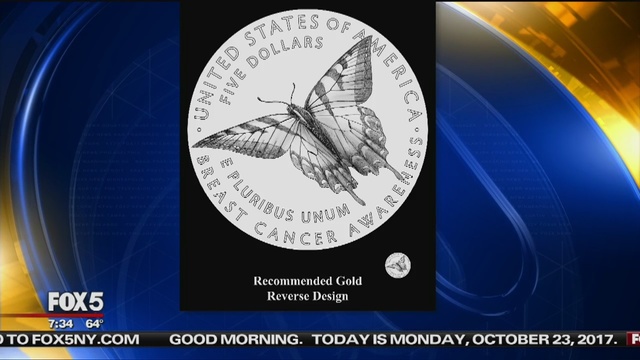
Still frame of Breast Cancer Awareness commemorative coin reverse from Fox 5 NY
Summary of the Breast Cancer Awareness Commemorative Coin Program
- Commemorative coins issued in 2018
- Design, emblematic of the fight against breast cancer, selected from a juried competition with no less than $5,000 going to winning design
- “The Secretary shall encourage three-dimensional designs to be submitted as part of the proposals”
- 50,000 $5 “pink gold” coins with an alloy of at least 75-percent gold with a $35 surcharge
- 400,000 one-ounce silver dollars made with not less than 90-percent silver with a $10 surcharge
- 750,000 clad half-dollar coins with a $5 surcharge
- Surcharges will be distributed to the Breast Cancer Research Foundation of New York, to further breast cancer research funded by the Foundation.
Pink gold can be more commonly described as “rose gold.” Rose gold is an alloy of 75-percent gold with 20-percent copper and 5-percent silver. The color can be adjusted by changing the ratio of copper and silver.
Oct 23, 2017 | coins, currency, poll
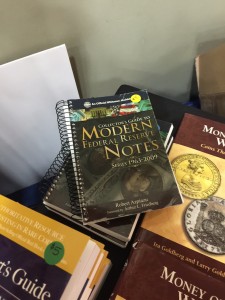 While thinking about modernizing the hobby it came to me that there is one aspect of the hobby that may still be stuck in the 20th century and that is price guides.
While thinking about modernizing the hobby it came to me that there is one aspect of the hobby that may still be stuck in the 20th century and that is price guides.
Price guides are supposed to be the guide that tells buyers and sellers the value of a coin. But over the years price guides went from being an art form to a statistical business with many different players vying for your attention.
Some of these guides have a good reputation while others may not be considered the best sources for prices. In either case, collectors have been known to use both the good and not so good to determine the price of their collectible because ultimately, the price is what you are willing to negotiate with the dealer to pay for the item regardless of what the guide says.
I started thinking, what do collectors use as their guide for pricing? Do they use more than one guide? If they buy a hardcopy (“dead tree edition”) do they buy new copies every year?
Today’s poll wants to know what you use to determine the price of your collectible or the acceptable price to buy or sell that special item.

Loading ...
Oct 22, 2017 | commentary, news, policy
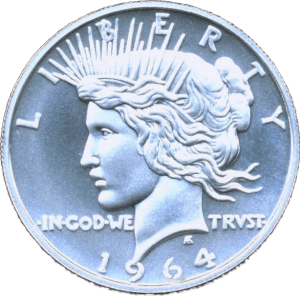 The Coin Collectors Blog has been and always been about collecting numismatics in all forms from a collector’s point of view. As I am coming up on my 12th anniversary of writing this blog, I would like to address a few comments I have received via email.
The Coin Collectors Blog has been and always been about collecting numismatics in all forms from a collector’s point of view. As I am coming up on my 12th anniversary of writing this blog, I would like to address a few comments I have received via email.
As a reminder, a blog is short for “weblog” which, according to Wikipedia, “is a discussion or informational website published on the World Wide Web consisting of discrete, often informal diary-style text entries (“posts”).” It is not a news site or a site that adheres to certain editorial form. Although news organizations now use blogs and blogging platforms, the Coin Collectors Blog is not pretending to be a news outlet.
When I started writing the Coin Collectors Blog in 2005, not only were there few coin collecting resources on the web, but there were no blogs. I wanted to provide some information, discussions, and (yes) opinions on every topic in the world of numismatics that I thought a collector would be interested in hearing about.
I also have made my interests clear. I will discuss everything that affects numismatics including the monetary policy that concerns the circulation of coins and currency and the people involved. This includes the politicians, both elected and appointed, that have direct involvement in any area that affects numismatics.
One of those politicians is Secretary of the Treasury Steven T. Mnuchin. As Secretary of the Treasury, he is in charge of every bureau in the Treasury Department including the U.S. Mint and Bureau of Engraving and Printing. Thus, what happens to Mnuchin can affect those bureaus. As far as I am concerned, that makes Mnuchin fair game for coverage on the Coin Collectors Blog.
After I reported about Mnuchin’s visit to Fort Knox, a U.S. Mint-managed facility, that both the Office of the Inspector General and a public interest group were looking into the travel and its costs. Since the story concerns the Secretary of the Treasury visiting a U.S. Mint facility, I felt it was my right and responsibility to report on.
Although there have been other issues with Mnuchin reported, they did not involve his department leadership as it pertained to the U.S. Mint or Bureau of Engraving and Printing. I did not feel it was appropriate to write about it on the Coin Collectors Blog.
-
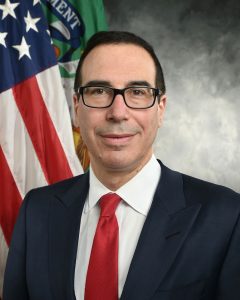
-
Steven T. Mnuchin, the 77th Secretary of the Treasury
-
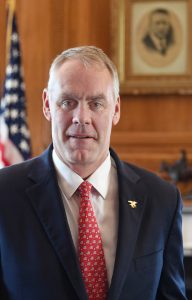
-
Secretary of the Interior Ryan K. Zinke
More recently, I wrote about Secretary of the Interior Ryan K. Zinke having his own challenge coin. Although Zinke is not in charge of anything regarding the U.S. Mint or Bureau of Engraving and Printing, the fact that he has a challenge coin is significant. Collecting challenge coins is part of numismatics and any government agency official that decides to have his own challenge coin should be fair game.
In both cases, I was accused of stepping into politics in a bad way.
I know political discourse has changed, but I am still the same blogger who has covered numismatic bills in Congress, which there is a monthly status posting; nominations of Directors and Treasurers; defended the ancient coin collectors from the State Department; and posted a tribute to Mike Castle, the former Republican Congressman from Delaware who introduced many numismatic-related bills including that law that became the 50 State Quarters Coin Program.
It has and always will be my policy to keep the content of the Coin Collectors Blog on topics related to numismatics, numismatic production, collecting, and the conditions that affect this world, including the action of the government officials with oversight of the related organizations, especially if there is a direct effect on the industry.
Comments are welcome and encouraged, but I wish some of you would comment on the posts—and remember, comments are moderated to prevent spam only. Sometimes the email I receive is very creative but have been asked not to share. I hope that you reconsider next time.
Now for the news…

October 15, 2017
Currency modernization will help secure our financial futures and save billions of dollars for taxpayers.  → Read more at cnbc.com
→ Read more at cnbc.com

October 15, 2017
(ArtfixDaily.com) Richmond Hill, ON – Thursday, October 26 marks 888 Auctions’ inaugural auction dedicated to numismatic items with a special focus on Chinese gold and silver panda coins. The 426-lot auction will also be featuring rare coins from all over the world and will also be accompanied by 888 Auctions’ usual complement of Asian fine and decorative arts, including finely carved jadeite objects, porcelain ceramics, furniture and jewelry.  → Read more at artfixdaily.com
→ Read more at artfixdaily.com

October 17, 2017
Share During the Western Han Dynasty (206 B.C. – A.D. 9), the question of monetary freedom was vigorously debated. There were as yet no banks or paper money in China — money consisted solely of coin.  → Read more at cato.org
→ Read more at cato.org

October 18, 2017
Summary Harry Dent used to say gold will fall to $250, then $400, now he says $700. What are we to believe?  → Read more at seekingalpha.com
→ Read more at seekingalpha.com

October 18, 2017
Archeologists regularly stumble over troves of gold coins dating back centuries, proving that money is as old as civilisation itself. Cash, however, brings practical limitations when it comes to how much we can physically move about, which is why currencies also depend on a system of trust to allow easier representations of physical coins, gold etc.  → Read more at thenational.ae
→ Read more at thenational.ae

October 20, 2017
BENGHAZI, Libya, Oct 20 (Reuters) – Authorities in eastern Libya will circulate their own coins for the first time to ease shortages of money, a central bank official said on Friday, in another sign of disunity in the country that has two rival governments in east and west.  → Read more at af.reuters.com
→ Read more at af.reuters.com

October 20, 2017
Noma Bar for Reader's DigestWhen Joan Langbord found ten gold coins in a family safe-deposit box in 2003, she knew she’d unburied a treasure. Langbord, then 75, had worked in her late father’s Philadelphia jewelry store her entire life, and she was fairly sure that the coins were 1933 double eagles.  → Read more at rd.com
→ Read more at rd.com

October 20, 2017
The coins went out of circulation on October 15 but can still be deposited at banks, building societies and post offices  → Read more at burtonmail.co.uk
→ Read more at burtonmail.co.uk

October 21, 2017
Chief of Staff of the Army Gen. Mark Milley stands beside the design for the back of the World War I commemorative coin, dubbed “poppies in the wire,” after he unveiled it Oct. 9, 2017 at the Association of the U.S. Army Annual Meeting and Exposition.  → Read more at aerotechnews.com
→ Read more at aerotechnews.com
Oct 20, 2017 | coins, commemorative, dollar
NOTE: I reached out to LeRoy Transfield, the winner of the design competition for the World War I Centennial Commemorative dollar coin to ask about his experience with the design competition. Yesterday, I posted a write-up he provided to me. Today, are his answers to additional questions I had.
-
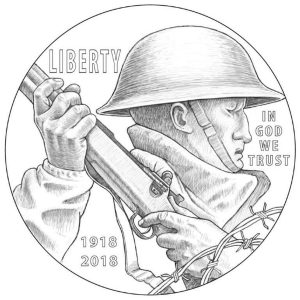
-
2018 World War I Centennial Silver Dollar Obverse — “Soldier’s Charge” by LeRoy Transfield
-
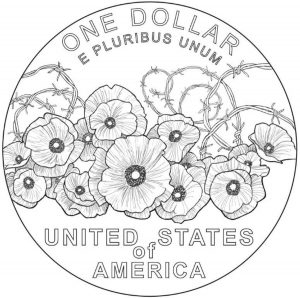
-
2018 World War I Centennial Silver Dollar Reverse — “Poppies in the Wire” by LeRoy Transfield
Coin Collectors Blog: I see from your website that your expertise is sculpting larger works, such as statues. Were there techniques you have used in the past that helped you with the design process?
LeRoy Transfield: I haven’t done that many low relief sculptures before although I have had many years of experience in high relief. I mostly do the figure but from my early training in college I learnt that basic elements and principles of design plays a big role.
CCB: Did you have interaction with the selection committee? Did they ask for modifications, specifically based on their ability to strike a proper coin?
LT: I didn’t have any interaction with the committee other than when I spoke to them when they called me to say I won. They made some modifications to my submission such as making the rifle more accurate and the helmet more covered. The drawing they presented is actually not mine. I think there are problems with it such as around the eyes, proportions a little off on the soldier. But I think the final coin sculpted by Don Everhardt will look a lot better than that.
CCB: How were you notified that you won the competition?
LT: I was in Hawaii working on a project there which is a nice place to receive good news. They emailed me saying they wanted a conference call with me. It was 4 officials from the mint, The director, the head sculptor Don Everhardt, Meagan the project manager and one other can’t remember that one: sorry:8. I was informed I won and that the judging was unanimous that my design was outstanding among the entries. Don was very nice and said I did very nice figure work and that I had ‘nailed the design.’ I understand the project was his last sculpture before he retired. It was a very exciting time and a little stressful considering what it meant for the future and that I didn’t really think I would win since it was my first coin attempt. The $10,00 prize was also a great bonus and justified the summer I spent staring off into space, doodling and sitting around looking at war movies (Flags of our Fathers, Letters from Iowa Jima and Band of Brothers were my favorite).
CCB: Now that you won your first design competition for the U.S. Mint, would you consider entering another? Would you consider becoming a member of the U.S. Mint’s Artistic Infusion Program?
LT: I am a finalist for the Apollo 11 coin which we have already submitted our entries to. I as in my WW 1 coin design, I am pleased with what I came up with and whether it does well or not, I am happy to have to judged and my initials to the coin if it does win. I think this competition will be interesting because they said they will post the entries online but the committee will make the final decision. I didn’t enter the Breast Cancer Awareness coin because at the time I couldn’t think of anything that would say that in a coin. I could have thought of some cool designs but nothing (appropriate) to say oh yes that coin is to do with breast cancer.
I would become a member if they asked. I think sometimes the coins the mint puts out are too illustrative and rely too much on technology (such as Z brush). Coins are very hard to design especially in low relief since there are so many rules and so many things that look bad when translated to low relief. In the end I would use the ultimate test I do on any sculpture I make, to stand well back and be as objective as possible and say-does it look any good?
I would like to thank LeRoy Transfield for his time!
Oct 19, 2017 | coin design, coins, commemorative
NOTE: I reached out to LeRoy Transfield, the winner of the design competition for the World War I Centennial Commemorative dollar coin to ask about his experience with the design competition. He sent me a copy of his story with permission to publish it here. The following is what he sent. I had additional questions. Those will be published tomorrow.
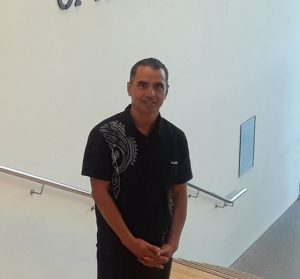
LeRoy Transfield
Secondly, I was excited because I am a sculptor and love sculpture of all kinds. My specialty is sculpture in the round, figures, people. I have done very few low relief sculptures and no coins. Despite this, I enjoy looking at well-sculpted coins and even have a small coin collection of my own. My favorite American coin is the Standing Liberty quarter by Hermon MacNeil.
Thirdly I have done a number of war memorials for local towns in the area including the city I live in. During these experiences, I have gotten to know many veterans and people that fought in most of the major wars of the 20th century. Many of them including people I worked very closely with are now gone. But I often think of them and how their lives have touched mine.
Last, I was inspired by my own family. Both extended and immediate. I have been supported and helped over the years and always feel grateful for their support. Also, my Great Uncle on my mother’s side actually fought in World War One as part of the Maori Battalion. The Maori Battalion were part of the New Zealand Expeditionary Force to aid the allies. The Maori are the indigenous people of New Zealand.
All this excitement and energy flowed through me when I first got the news that I was a finalist. I so wanted to create a great design! Even though I had seen many WW I movies already and new the history, I review many pictures, books, films and documentaries to focus on the American role in the war.
I also looked at great coins. Not so much as to get an idea for a design or copy them, but to dissect those good coins and figure out what made them so good compared to average coins and what rules helped them achieve such inspiring results. I wanted an original design but one that followed those lines of greatness.
I thought about the poem, In Flanders Fields and thought Poppies would be a good thing to put in there somewhere. I also thought of the armistice and how excited everyone was when the hour came. A peace that may well not have happened without American support.
With all these thoughts, I started drawing images. I drew for two weeks. Ideas and designs of mostly soldiers in different poses that could easily be accentuated in a relief coin design. After this I started making clay versions of my sketches and quickly realized the drawings were useless and didn’t help me see problems in the design once it was built up in clay.
After about 4 or 5 weeks I was hitting a wall. No really good design was standing out from the numerous changes and trials I had done. The mint offered a conference call to all 20 participants to go over any questions we might have. This was of great help. In the call, I asked, what is the most common mistake made by beginning coin designers. The person, I forgot his name, said the most common mistake was adding too much detail to the 8-inch mock-up because one has to keep in mind that the final will be only 1.5 inches and much of the detail will be lost. Even though I already knew this it sank in even more. The other impression I got from the call was that the mint is really leaving things open to the finalists and wants to see what we can come up with, and not worry a whole lot about whether the design is right for coining as they have sculptors would fix those problems. They just wanted to see what we could come up with.
The first thing I did was scrap the board I was working on. At 18 inches, it was way too big. I thought that in working larger than the required 8 inch casts to be submitted, I could make a good large design and boil it down to a really good 8-inch final. Instead, I went the opposite way and started to work smaller than the 8 inches to get a better feeling of a coin. I started sculpting on 4-inch wood discs. This really helped a lot. It made it way easier to make a quick design and
help me see if it was going to work. I finally came up with the soldier profile, collar up and a rifle slung over his shoulder. This was not the final design but a good starting point. As I had the soldier in profile worked up, I wanted to add to it but knew not what it needed. That night I had barbed wire going through my head. Soldiers charging barbed wire, wire in the dirt and finally somehow, wire on my relief sculpture. After dreaming about barbed wire, I went to the piece and add the two small strands of wire in opposition to the rifle and the soldier. The hands also seem a natural thing to add and just like that I had the design for the Obverse.
I was very demanding on myself and didn’t say, that’s it, that’s the one. What I said was that’s a good Obverse, now make another. Another one never came. I was running out of time so I decided then to make that my Obverse and put my thoughts into the reverse. I actually thought I had a good idea already, an eagle. It was going to be a diving eagle, in profile, with wings outstretched holding arrows and an olive branch. In the eagle’s beak would be a banner with the words e plurubus unum. In the background would be a map of Europe. I just knew it would look good. But when I fleshed it out it looked terrible!
I looked for another idea. It had to be as good as the soldier. The eagle didn’t work but I wanted to try a bird again and knew that carrier pigeons were used a lot in World War One so I decided to use a pigeon. I looked at many pigeons and pigeon photos and sculpted up something I thought looked ideal. This was good because the time for submitting was running out! I had only three days left.
With the pieces molded and cast to the 8 inch specifications I had the two designs. The soldier looked good. I had different thoughts about the pigeon. I sculpted the bird as best I could but the final reverse looked not near as good as the obverse. I was dumbfounded. I had to send the pigeon, time was up, I had no time to make another. But as I looked at the pigeon I became more and more alarmed to the point where my stomach ached to look at it. I was tired of the whole project.
I thought I should just send it and be done with it. But on more reflection, I just couldn’t do it, I couldn’t send it!
Firstly, I thought of the embarrassment of the committee seeing this lousy pigeon. I wouldn’t be there, I reasoned, but that didn’t help. Sure, they might like the soldier, perhaps they will choose that and another reverse. Even so I just couldn’t send it. So, I did a thought conversation and said to myself if you don’t like it they make something else, in your style, that you do like. Even if the committee doesn’t like it at least you can be happy with what you send and no regrets. But then I would vacillate back to you have run out of time just send it and be done with the thing.
At that time, my daughter wanted to go on a 9-mile bike ride up Provo Canyon, a favorite summer activity and jump off a local bridge into the chilling Provo river. School was about to start so this would be one last activity with my daughter. The ride there took about an hour. In retrospect, this time away made all the difference in my final decision to send a different reverse. As I left and rode away from my work I had a greater perspective. I could see I had learnt a lot in the last 10 weeks about coin sculpting and may well be able to come up with a good design in two days. Halfway into my ride I convinced myself that the pigeon had to go and now, what was I going to do to replace it? As we got to the bridge I came back to the beginning, poppies. But poppies are a little uninteresting and not that good looking in relief coin sculpture. So, my next thoughts were how to make the poppies look better.
This was all going on while I was enjoying the summer weather and river water with my daughter. To jump into the river, one would climb up on a steel rail about 4.5 feet above the bridge, balance there and jump into the water 15 feet below. It was exhilarating. Standing on top of the rail is quite an inspiring thing. The beautiful canyon, trees, rocks, and water looked awesome. I often thought that on a stormy day a bolt of lightning could easily find its way to the person standing perched so high on the bridge. As I stood there I thought came to me of using the barbed wire again in contrast to the poppies. I’ve got it I said and jumped into water fridge water. I had it all now, in my mind.
All I needed to do was go home and put in down in clay. When I got home my wife to catch up with me on her day. We talked about the recent passing of my old sculpture teacher and some of the funny stories he would tell us students. All this time I was sculpting the poppies and the wire. In an hour, it was done. That’s it! I said. I was unsure if it was a winning design but it was a design I could put my name to and come what may, I wasn’t embarrassed.
The plaster casts made it to the US mint the very last day of the deadline.
Portrait of the LeRoy Transfield taken from the artist’s
website.
 The Royal Canadian Mint has created two unique coins they call “Nocturnal by Nature” that would fit the theme of Halloween.
The Royal Canadian Mint has created two unique coins they call “Nocturnal by Nature” that would fit the theme of Halloween.






























 → Read more at
→ Read more at 
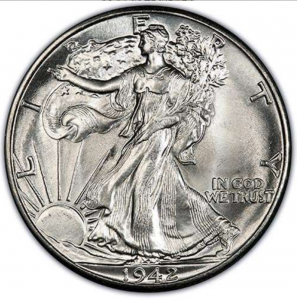
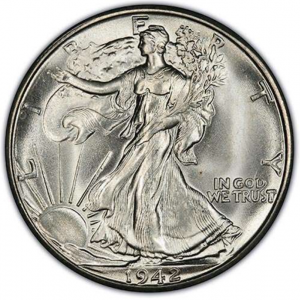



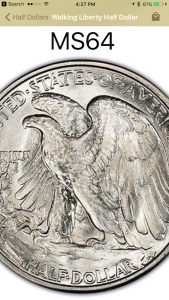
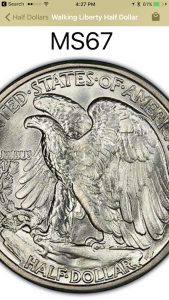


 While thinking about modernizing the hobby it came to me that there is one aspect of the hobby that may still be stuck in the 20th century and that is price guides.
While thinking about modernizing the hobby it came to me that there is one aspect of the hobby that may still be stuck in the 20th century and that is price guides. The Coin Collectors Blog has been and always been about collecting numismatics in all forms from a collector’s point of view. As I am coming up on my 12th anniversary of writing this blog, I would like to address a few comments I have received via email.
The Coin Collectors Blog has been and always been about collecting numismatics in all forms from a collector’s point of view. As I am coming up on my 12th anniversary of writing this blog, I would like to address a few comments I have received via email.




